
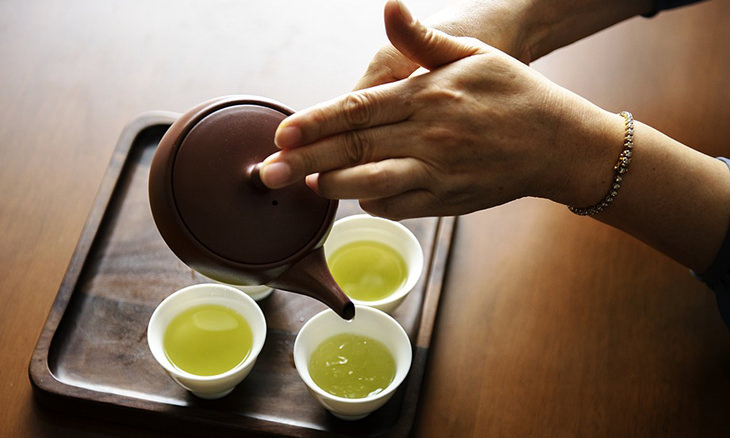
It’s normal in the western world to have a cold glass of water or perhaps a soda with a meal, but changing this habit can help to create better digestion. It’s much better to drink green tea or another hot tea 30 minutes before a meal to support enzymatic activity and enhance your digestive abilities, and then have something to drink 30 minutes after a meal, rather than during.
2. Lots of soup
Soup is highly nutritious, as well as filling. Most Asian soups are made with bones or vegetables, so they are full of vitamins and minerals. Examples are bone broth, vegetable or miso soups that are easily absorbed into the body. What’s more is that the warm temperature of soup can improve the entire digestive process.
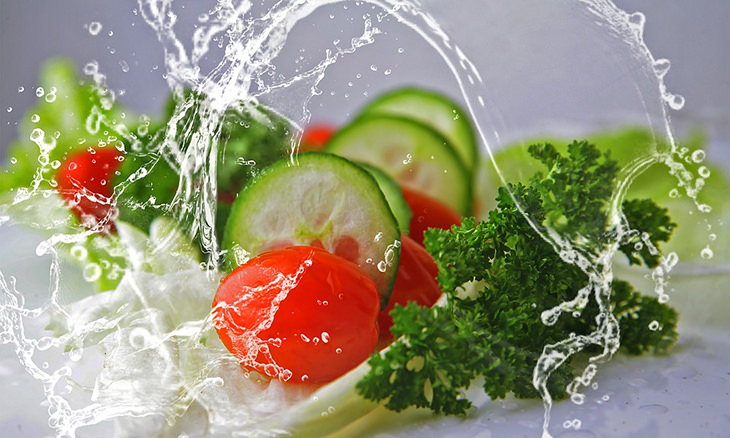
The Asian diet places emphasis on the importance of eating three times as many vegetables as meat. The usual meat and potato western diet does not leave much room on the plate for that many vegetables to be incorporated into a meal, but a little thing that you can do to make it healthier is to switch out regular potatoes for sweet potatoes. Other great additions you can make are bitter vegetables such as radishes and radicchio.
4. Small plates and chopsticks
Changing up your plates and serving bowls for smaller ones is a great way to eat smaller portions. Using chopsticks also makes it easier to avoid shovel eating techniques. If you’re an inexperienced chopstick user, chopsticks are guaranteed to slow down your rate of consumption and give your stomach time to communicate with your brain that it’s full and that it’s time to stop eating.
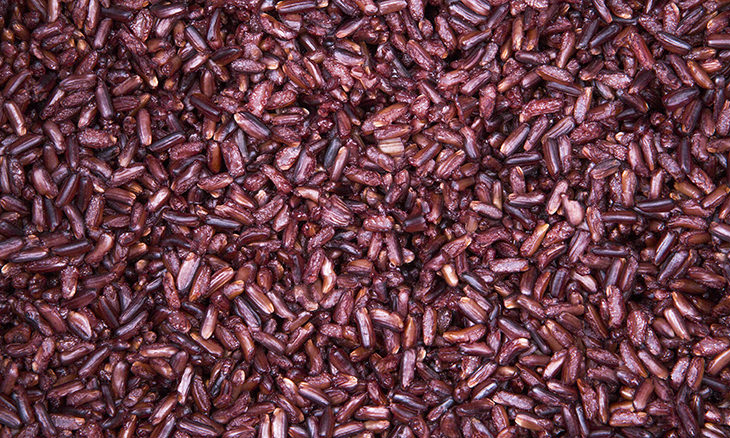
Black, red or purple rice varieties are nutritionally denser than white or brown rice. In Asia, rice is eaten to supplement a meal, rather than being the main course itself. Being a carbohydrate, it’s converted into sugar when being digested, dramatically upping your glycemic index. This is a good source of fast energy, but bad if you want to avoid blood sugar fluctuations, or if you are diabetic.
6. Not eating dessert every night
If you really must have dessert, make sure that you have fruit. It’s nutritious and delicious, and commonly served as a dessert in Asia. Sugary cakes, cookies and ice cream should be saved for special occasions only.
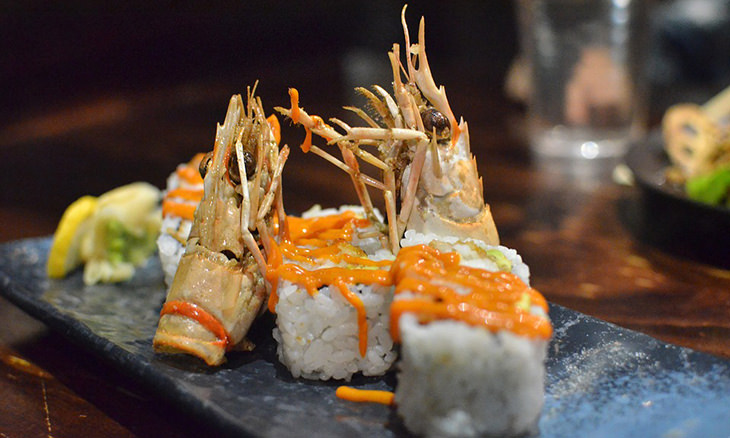
It’s a well-known fact that seafood is very healthy, and it has been a part of diets around the world for millennia. We’ve all heard about the healthy oils that are found in fish, but Asian culture has always done better at continuing to incorporate fish as part of the local diet.
8. Healthier snacks
In Asia, people tend to snack on seaweed, nuts, dried fruit and seeds as opposed to chips, cookies and other unhealthy snack foods that are more common in the west. In fact, they’re easy to find in almost every market. The one thing you have to watch out for if you decide to start snacking the Asian way is to be wary of the salt content in nuts.
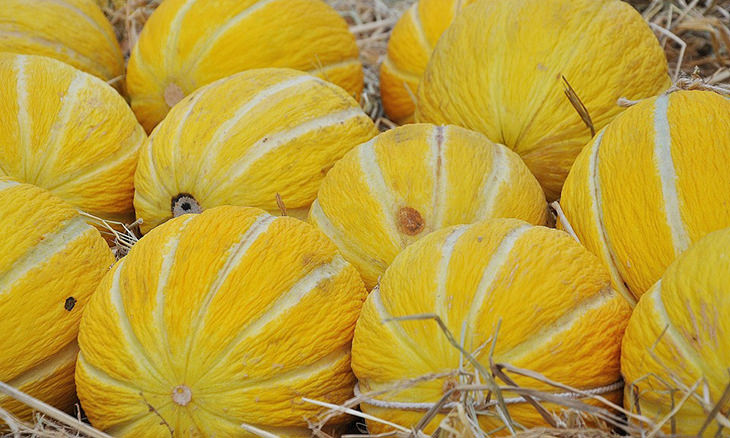
Not much consideration is given to the energetic temperature of foods in the west relative to the seasons. This simple rule of thumb dictates that cooling foods should be eaten in hot weather, and warming foods should be eaten in cold weather. Hot soups and stews are for winter, whereas the likes of celery, melons and cold salads are for summer. Every food has an energetic temperature and accordingly, has an effect on the body.
10. Avoid cow’s milk
Milk combines horribly with many foods that we eat, despite the notion that it’s perfectly healthy being continuously foisted upon us by advertisers. In fact, cow’s milk is completely absent in Asian diets. The problem is that cow’s milk slows down gut motility to a snail’s pace, which is the exact opposite of what is best for healthy digestion. Try replacing cow’s milk with almond, coconut, rice or organic soy milk.

5 Signs You Might Be Developing Multiple Sclerosis
Multiple Sclerosis is a debilitating disease, but you can spot it early if you know how to. Learn 5 tell-tale signs of the onset of Multiple Sclerosis.
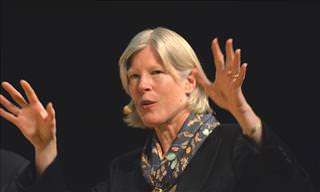
Here Are Some Novel Ways of Delaying Aging...
Longevity is something we strive for, but we want it without aging to the detriment of our quality of life. Read what 5 longevity researchers have to say.
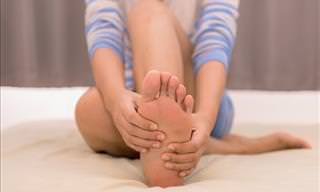
Having Leg Cramps at Night? Then You Need to Know This
Night leg cramps beyond annoying: they can interfere with sleep and life quality. Here's everything you need to know about night leg cramps.
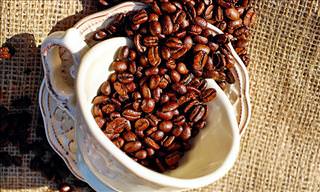 4:50
4:50
STUDY: Drinking Coffee Can Increase Bad Cholesterol Levels
A new study has just been published showing that drinking coffee can actually add to bad cholesterol. Learn more in this video.

Busted: the Reality of 5 Popular Health Supplements
Not all the famous health supplements these days are genuine. Know more about the reality of some popular weight loss supplements here.

Determine If You're a Type D Personality With This Guide
The D in Type D personality stands for "distress", which refers to the heightened level of the emotion that Type D people tend to feel. Find out more here.

11 Laundry Habits That Are Secretly Ruining Your Clothes
Here are the most common laundry mistakes and how you should be washing and drying your items instead.

Cuticle Oil: What It Is and How to Make Your Own
Cuticle oil is a skincare product that can work wonders for the health and appearance of your nails and the skin surrounding them. You can purchase ready-made cuticle oil in stores or online, but making it at home is simpler than it seems.
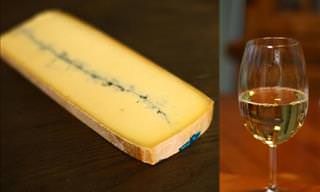
Which Wine Pairs Well with Which Cheese? Here’s the Guide
Pairing the perfect wine to a slab of cheese is an art form that can truly elevate the taste of both. Here's how it's done.
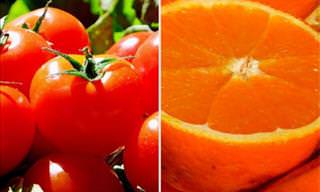
Consuming Too Much of These Healthy Foods Can Be Deadly
While they may appear to be healthy on the surface, you may be surprised to discover just how fatal these 6 foods can be.
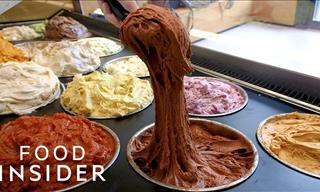 8:18
8:18
The Ultimate List of Extravagant Desserts You Must Try
Here are some truly unbelievable and outrageous desserts from around the world that you simply must add to your bucket list.

5 Dessert Recipes in 5 Ingredients or Less!
Check out these easy and refreshing dessert recipes that use 5 ingredients or less!
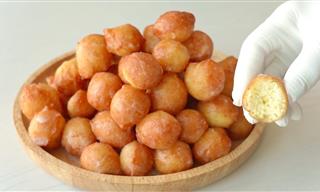 2:45
2:45
The Yummiest Donuts You’ve Never Had Before!
Ever tried bubble donuts? They are soft, small, delicious, and super easy to make. Follow the recipe here...

These Protein Packed Broccoli & Cheddar Bites Are Delicious
A delicious and protein-packed snack that'll make for the perfect side dish.
 19:25
19:25
These Nostalgic Dishes Are Making an Unexpected COMEBACK
Remember French onion soup, quiche, and bread bowls? Well, these and other classic 1980s foods are making a huge comeback!
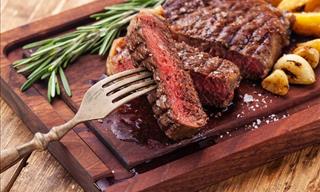
9 Guides to Preparing the Perfect STEAK Every Time
Learn to make the perfect, juiciest steak with this collection of 9 invaluable cooking guides and recipes
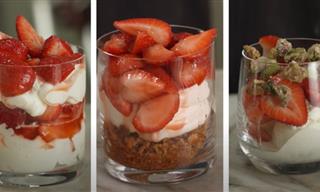 20:02
20:02
Strawberries in a Cup - 3 Easy Dessert Recipes
Not a fan of spending hours in the kitchen only to make one pie? Then you'll love these quick and easy strawberry recipes served in a simple cup.
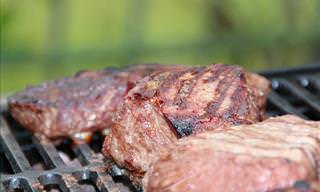
A 100% Proof Method to Know if Your Steak is Done ...
Steak can be prepared in many ways, depending on your liking but this method will determine when your steak is truly done!
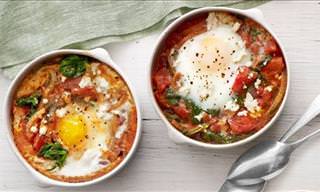
7 Heavenly Dishes That Use Eggs to Delight You
Try your hand at one of these seven innovative and delicious egg-based recipes both you and your guests will love.

Make Much Better Eggs With These 10 Awesome Tips
You may think you're able to cook eggs well, but these tips will simply take your ability to a whole new level. Learn how to cook eggs right in this post.
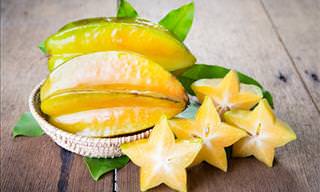
7 Seasonal Superfruits You SHOULD be Eating
It's well documented that fruit is very good for you, but not all fruit is created equally. Here are 7 seasonal superfruits that you should definitely be eating.

7 Ways to Instantly Upgrade Your Chicken Breast
Here are 7 simple but powerful techniques you can start using right away to make your chicken breasts taste better.
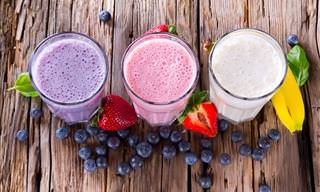
Add These Tasty Protein Shakes to Your Daily Routine!
Here are 27 delicious and nutritious protein shake recipes that you can add to your daily routine.

This Exquisite Risotto is a Seafood Lover's Dream
This recipe will show you how to make a delicious and hearty seafood risotto.
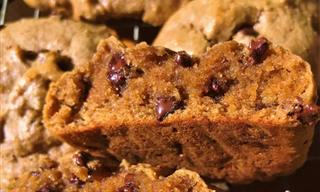
3 Winning Banana-Based Delicacies Everyone Will Love
From creamy puddings to decadent cakes and vegan cookies, these dishes showcase the banana's endless possibilities.
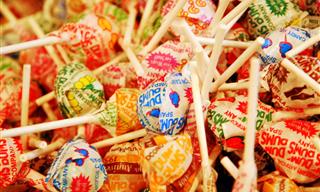
Origins of Candy Names (and a Tootsie Roll Recipe!)
Learn the origins of some famous candy names, and try a DIY tootsie roll recipe!

We Bet You've Never Tasted Potatoes As Delicious As These
These are the best potatoes you have ever tasted!
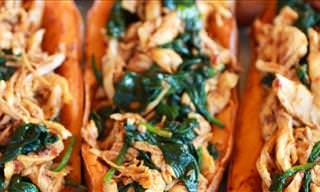
6 Scrumptious Stuffed Vegetable Recipes You Must Try
Stuffed vegetables are loved all over the world, but have you tried these 6 inventive recipes?

Wake Up to This Heavenly Breakfast Recipe
This heavenly treat combines all of your favorite breakfast ingredients
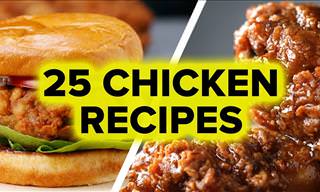 23:11
23:11
25 Delicious Chicken Recipes All In One Place!
This video is so useful - 25 delicious chicken recipes all in one 23 minute video that will show you how to make them in action.
 7:24
7:24
Grilled Cheese: The Deluxe, Most Delicious Edition!
This tutorial is about to teach you how to take your grilled cheese to a whole new level.

Create This Chocolate Peanut Butter Dessert Without Baking
Create a mouthwatering chocolate peanut butter desert without any baking. This easy-to-follow recipe will melt in your mouth with its delicious flavors.
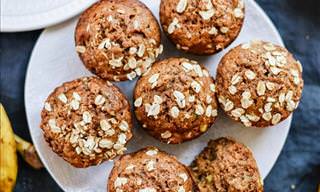
Maple Banana Muffins That Are Healthy as Well as Delicious
This recipe will show you how to make delicious and healthy maple-sweetened banana muffins.

Freeze These 13 Foods to Improve Their Taste
Did you know that these foods taste even better after freezing? Since your freezer is always on, you might as well make good use of these delicious tips!
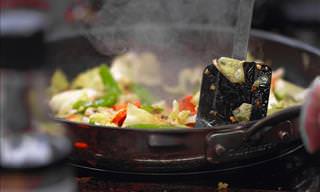
Discover How to Reheat Any Leftovers in the Optimal Way
Learn the ideal way to reheat any kind of meal with this comprehensive guide.
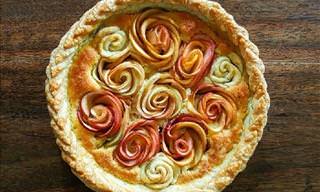
These Pies Are Truly a Feast for the Eyes and the Stomach!
If you love pies, then you absolutely need to check out these incredibly beautiful pie crusts, which are utter masterpieces.

Improve Your Dessert Time With These 4 British Classics!
American pie sure is delicious, but when it comes to baking incredibly tasty desserts, the Brits come well out on top. Here are 4 delicious British desserts.
 7:34
7:34
Bring Variety to Your Morning With 10 Iced Coffee Drinks
Bring variety to your breakfast with these delicious and refreshing iced coffee drinks!

A Twist on Traditional Meals: 8 Delicious Savory Muffins
For a fun and new way to serve up some hearty and delicious grub, try turn a traditional recipe into a muffin! From breakfast ideas, to pasta, main courses and appetizers, here are 8 fantastic savory muffin ideas you can serve.
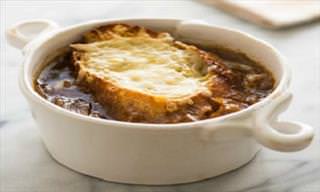
A French Onion Soup to Warm Even the Coldest of Nights
This recipe will show you how to make a delicious and hearty French onion soup that'll warm even the coldest of days.
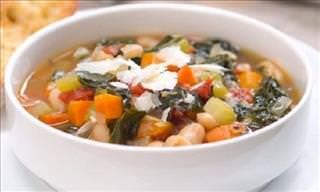
This Tasty Soup Will Become One of Your Favorite Dishes!
This Tuscan white bean & kale soup is healthy as well as hearty. Here's how you can make it.

COLLECTION: Everything You Wanted to Know About Wine!
This collection will expose you to some of our best information about wine, including a full guide for beginner's, the best wine/food combinations and more

14 Dreamy Dessert Articles for Every Taste and Preference
There’s always room for dessert, and the more options, the better. This comprehensive collection of articles has dozens of dessert ideas
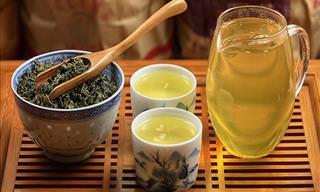
Tea Collection: Health Benefits, Uses and Recipes!
You'll find here no less than 11 guides to tea, from terrific health benefits you didn't know about to using it around the house for excellent life hacks.
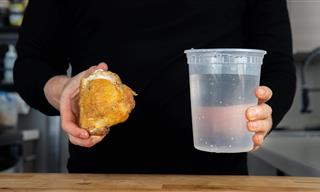 12:27
12:27
This Is the BEST Way to Cook Chicken
If the chicken you prepare always turns out dry and stringy, we have one question - have you ever tried poaching chicken? Here's how it's done + 2 recipes!

4 Tasty Mini Desserts That are Perfect for Thanksgiving!
These 4 recipes will show you how to make some extremely tasty desserts for Thanksgiving.
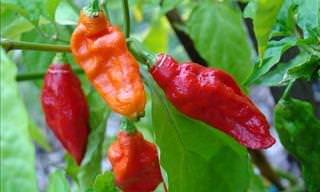
These Peppers Are So Hot, They’ll Blow Your Mind!
Spice is great for every diet and these peppers from all over are perfect for making any dish the searing hot with only a small amount.
 15:58
15:58
White Bread - 6 Delicious Food Ideas on a Budget
All you have left in the kitchen is some white bread? Learn how to easily prepare 6 budget-friendly foods using white bread as the base...
 3:17
3:17
These Refreshing Watermelon Drinks Are Perfect For Summer!
In this video, you will learn the recipes for 3 easy and yummy watermelon drinks, which are sure to become summer staples!
To enable your Ad-Free Subscription, please fill the fields below
Your subscription was successful, now you can enjoy an ad-free experience!! Note: To make sure you get no ads, please make sure to log in to your account. If you are logged in already, then refresh the page. The subscription can be cancelled at any time.


